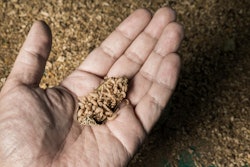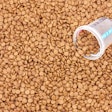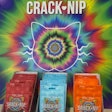
I often say that humanization in pet food is no longer a trend; it’s become a foundation of the market and a perpetuating force behind its continued growth. Proof of that notion comes from market research firms like Packaged Facts, whose January 2024 survey of U.S. pet owners found that 76% strongly agree their pets are part of the family, while 17% agree they are.
While I can’t help but wonder what’s up with the remaining 5% who neither agree nor disagree, or especially with the 2% who disagree, that 93% total who consider their pets family members rivals similar shares from around the world, according to more recent research from Mintel. Its data show 92% of Brazilian and 86% of Irish pet owners see themselves as “parents” of their pets.
That helps explain why, “Across the globe, pet ownership rates are higher than ever,” the Mintel report says.
Younger pet owners give ‘pets as family’ a new spin
According to Mintel’s data, pet ownership has reached a 73% rate in the U.S., followed closely by Brazil at 71%. Other countries highlighted in the report include Canada at just over 60% pet ownership, with the U.K. and Germany showing lower rates, at about 58% and 56%, respectively. (It’s worth noting that pet adoption rates have fallen significantly from pandemic booms, at least in the U.S., where the number of dog-owning households is also declining as cat-owning households increase, per Packaged Facts.)
The “pets as family” factor not only stretches across continents, the report says, but also across age groups. “In China, younger pet owners aged 18-24 are more likely to view their pets as life partners, whereas pet owners over 55 are more likely to see their pets as children,” it reads. “The same is true in the U.S., where younger adults see pets as companions and a precursor to parenthood. As is evident from this, the role of the pet is being redefined as they are increasingly included in all aspects of life.”
Another new report, Cascadia Capital’s “Pet Industry Overview: Summer 2024,” provides insights into that redefinition for the U.S. “Younger generations are increasingly controlling the direction of the pet industry and the customer acquisition and transaction dynamics that underly it,” it says. “Given these generations grew up with fully humanized pets, their views on pet ownership are distinct from predecessor generations. Their motivations as a cohort are centered around enabling their pets to live longer, happier and more mobile lives, often serving as a constant companion in lieu of family formation.”
(Cascadia Capital is an investment management firm with experience and expertise in the U.S. pet care market.)
Insights for the pet food market
What does all this mean for pet food and its future? Analysis from these reports offers some clues. “As a result, these owners [younger generations) are attracted to different brand attributes, hold less channel allegiance and engage in product exploration in unique ways,” reads the Cascadia Capital report.
For its part, Mintel highlights the tried and true — yet still highly relevant for pet owners — focus on specific types of ingredients. “Pet owners are increasingly looking for pet foods that promote overall health and wellness, with an emphasis on natural ingredients,” it says. They “prefer products with a simple, transparent list of recognizable ingredients over more-processed options (in a similar vein to the current concern around ultra-processed foods in human diets.”
Pet owners also continue to gravitate toward functional ingredients, especially those intended to support gut health for their pets. According to Mintel’s new pet food product data, almost 25% of new pet food launches worldwide in 2023 had digestive health claims, especially in Asia. Interest in the U.S. is strong, too. “Over half of U.S. consumers who purchase pet food are interested in alternatives that improve the digestive health of their pets,” the Mintel report reads.


















